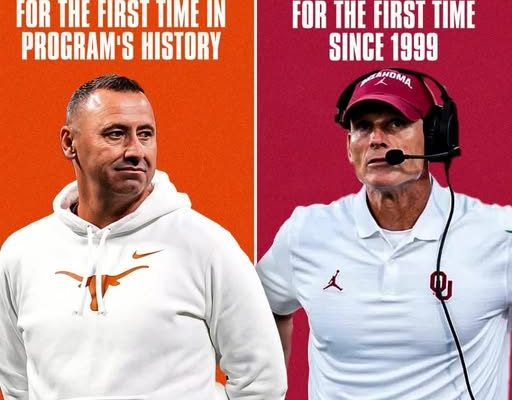The release of the preseason polls has once again ignited one of college football’s most enduring and passionate rivalries, as fans and analysts alike dissect the gap between the Texas Longhorns and the Oklahoma Sooners. The Red River Rivalry has always been about more than just one game—it’s a battle of pride, history, and regional dominance. But when the early polls come out, they provide a snapshot of how the national media, coaches, and analysts view these two iconic programs heading into the new season. This year, that snapshot tells an intriguing story, one that blends past results, future potential, and the unpredictability that makes college football so magnetic. The gap between the Longhorns and the Sooners in the preseason rankings isn’t just a number; it’s a reflection of momentum, roster depth, and the perception of each program’s ability to perform under pressure. Texas enters the season riding a wave of optimism, bolstered by last year’s successes, key returning starters, and one of the most highly regarded recruiting classes in the nation. The Longhorns have invested heavily in building a team capable of competing not just for Big 12 supremacy, but for a spot in the College Football Playoff. This effort is evident in their improved offensive line, depth at skill positions, and a quarterback room that exudes confidence. The polls are often a mirror of expectations, and right now, expectations for Texas are sky-high. Meanwhile, Oklahoma approaches the season with a different narrative. The Sooners are in the midst of reshaping their identity under a coaching staff still relatively fresh to the program. While last season brought moments of promise, inconsistency plagued their campaign, and the offseason became an exercise in plugging roster holes, developing young talent, and refining a system that can restore them to their usual position as a conference powerhouse. Oklahoma’s placement in the preseason polls reflects both respect for their tradition and skepticism about whether they can immediately return to dominance. The gap in the rankings may seem modest on paper—perhaps just a few spots—but it feels larger when viewed through the lens of recent form and the national conversation. For Texas, the narrative is about seizing a long-awaited breakthrough; for Oklahoma, it’s about climbing back to the level that their fan base demands. This dynamic fuels not only their head-to-head clash later in the season but also their week-to-week performances, as both programs know they are being judged in comparison to the other. Polls, of course, are inherently imperfect. They are shaped by last season’s memories, offseason buzz, and the reputations of players who haven’t yet taken a snap in the new campaign. Injuries, breakout stars, and unexpected upsets can make preseason rankings feel irrelevant by midseason. Yet they matter because they influence public perception, recruit interest, and even playoff committee discussions later in the year. For Texas and Oklahoma, the preseason gap is a subtle reminder that their rivalry isn’t just played on the field—it’s fought in the headlines, the recruiting trail, and the minds of those who follow the sport. Both programs know that closing or widening that gap will come down to execution, health, and resilience once the season begins. When they finally meet in Dallas, the gap in the polls may be irrelevant, but right now, it’s another chapter in the never-ending story of two proud programs vying for supremacy in the college football landscape. The season will reveal whether Texas can turn its preseason promise into postseason glory, or whether Oklahoma can silence the doubters and reclaim the upper hand. Either way, the current separation in the polls adds another layer of intrigue to a rivalry that needs no extra fuel.
The difference between the Texas Longhorns and the Oklahoma Sooners in the preseason polls



